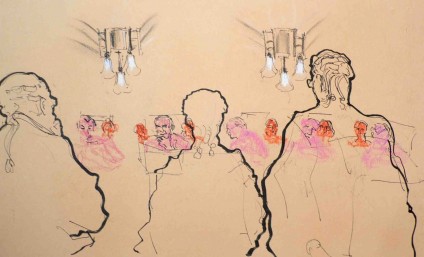As Rolf Harris awaits sentence after guilty verdicts for historic indecent assaults there is a flurry of media activity analysing the verdicts and the reactions to those verdicts. In England the jokes about Rolf’s digeridoo were rife weeks ago and, once he admitted a serious breach of trust with his daughter’s friend, his reputation was tarnished forever.
The guilty verdicts looked inevitable. In Australia, the reaction is one of severe disappointment and disbelief. The Royal Commission on Institutional Responses to child sexual abuse is rumbling on and there are revelations of abuse in Australia daily. It makes for miserable headlines.
It is a case that has shown the realty of criminal trials that go on every day of the week. This one just had more publicity.
I anticipate further interesting revelations in this case but at least so far, there are three things that interest me about the Rolf Harris decisions:
- The jury questions last week demonstrated that the jury were considering judicial directions on evidence of propensity and coincidence. This relates to evidence of bad character in the UK and is perhaps more accurately referred to in Australia as evidence of tendency and coincidence. As I explained in Criminal Law and Justice Weekly, heavy prejudice will always be present when it is suggested that an alleged offender engages in a pattern of behaviour or evidence of a suspect’s bad character is admissible to rebut coincidence. There is the potential for confusion for juries when there are numerous allegations. This is a particularly keen problem in cases involving alleged sexual abuse. Even in the most emotive of cases, there has to be a balance in the approach to such evidence to ensure that convictions are not based wholly on moral prejudice. The probative force of such evidence works via inferences. As with any circumstantial evidence, its usefulness rests entirely on the validity of the inferences it is said to support with respect to the matters in issue. In discussing the probative value we must consider the degree of relevance to the facts in issue and the strength of the inference that can be drawn. The strength of the inference must be such that, if a properly directed jury is satisfied there is no collaboration or collusion by witnesses, it would be an affront to common sense to suggest that the similarities were due to coincidence. Passage of time can weaken such an inference as can intervening events and a lack of distinctive features (although this does not mean a return to the old striking similarity test). Cases get complicated when alleged similar acts are not proven or turn out not to be similar when evidence is given. It is always the use and purpose to which the evidence is put that is important – not speculation or assumption but logical inference. Here the jury took the time to decide which evidence from which complainant supported the evidence of the others
- The trial demonstrated the complexities of cases we as advocates have to deal with which involve global allegations. Current rules on extra territorial jurisdiction are restrictive. Victims from other countries (if they are not children) have to be used as supporting evidence. Their complaints cannot currently be added to an indictment. This legal complication should change. Serial abusers move easily around the world. I have dealt with a case where a man abused women in more than one jurisdiction at least one of whom he picked up on a dating website. Like cases of child abuse, the pattern of global offending ought to be reflected in an ability to hold trials with all alleged victims on one indictment. The existence of indecent behaviour to other women and children is an aggravating feature on sentence but is small comfort for those who give evidence and are believed. It is not yet clear whether proceedings will be brought in Australia but, given his age and the likely sentence, the holding of one trial in London, despite the jurisdictional complexities was a sensible move.
- The failure of the criminal courts to deal with compensation in the way that confiscation occurs in financial cases. Actions for personal injury for child and adult abuse are on the rise as complaints are made. Some are dealt with by the police. Some are not. In some cases damages can be sought against an abuser. In others there is a responsible body which can be targeted as vicariously liable for the acts of employees and those akin to employees – predicted last year by me in The Times. The old fashioned view used to be that compensation was a motive for a false complaint. The reality is that it is a logical process for personal injury in the same way as a health and safety issue at work, school or sports centre. Victims will exercise their right to be compensated for abuse from those who trespassed to their persons and those who turned a blind eye and it will be for the courts to sort out which claims can proceed.
There is so much more I could write – about how little women and girls were valued in the 1970s, about how we need to consider restraint proceedings as those subject of criminal allegations will seek to dissipate their assets to avoid a civil claim and about how we must maintain balance and not assume that every male is a paedophile. Rolf Harris will have a lot to answer for on Friday including the education of at least 2 nations about abuse and I will have to write another update for The Sexual Offences Handbook.








